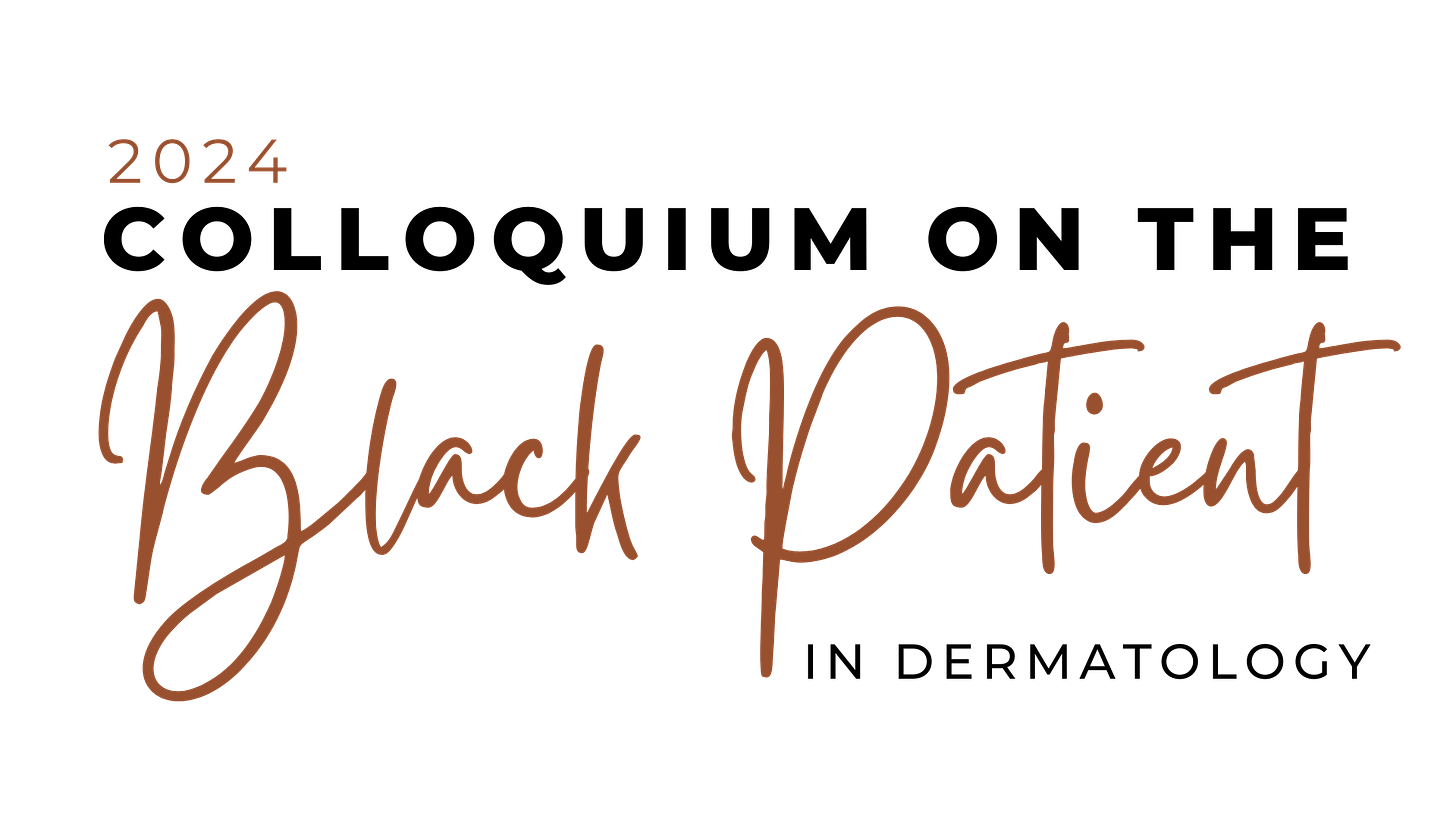Gender differences in treatment outcome of inflammatory skin diseases
Today’s report also covers research into treatment-induced anogenital melanosis in vulvar lichen sclerus, generalized exanthematous pustulosis triggered by Covid-19, and more (1,520 words, 7 minutes)
The Women in Dermatology e-newsletter is supported without restriction by Galderma Canada.
Good morning, and welcome to the Women in Dermatology e-newsletter from Chronicle Companies. We’re pleased to have you join us. This biweekly bulletin will update you on new findings regarding dermatologic issues that affect women and the dermatologists who treat them. We welcome your feedback and opinions, so let us know if you have any comments, observations, or suggestions. You can email them to us at health@chronicle.org
A systematic review from the Journal of the European Academy of Dermatology and Venereology (July 2024) examined gender and sex-specific differences in treatment outcomes of inflammatory skin diseases. The researchers found significant gender differences and major gaps in gender-specific care in dermatology, particularly in treating psoriasis and psoriatic arthritis.

The authors systematically reviewed the literature published between Jan. 2001 and Dec. 2022, including randomized controlled trials, cohort studies, and case-control studies sourced from Embase, PubMed Medline, and Web of Science. The final review included 83 studies, most conducted in Europe, followed by the United States, Canada, Asia, and South America. The majority were retrospective, non-interventional, observational studies, followed by prospective, observational studies.
In total, 49 studies reported gender differences in psoriasis and psoriasis arthritis. These differences were found in treatment choices, initiation times, responses, and adherence. The authors found that, for these two conditions, women received more topical and fewer systemic therapies. Women also received slightly more non-biologic treatments than men, and they tended to get treated with retinoids before initiation of biological therapy.
The study also found differences in the timing of treatment initiation. Women with psoriasis tended to start systemic treatments later than men. There was no significant difference in the timing of biologic initiation between genders, but an age-related disparity was observed. The authors note that women over 55 were more likely to receive biological therapy, while men aged 35 to 49 were more frequently treated with biologics than women in the same age group.
In terms of treatment response, women faced more challenges than men. For example, while both genders benefitted from halobetasol in reducing the body surface area affected by psoriasis, women generally saw less improvement with conservative treatments such as apremilast or methotrexate. TNF inhibitors also tended to be less effective for women. Additionally, women showed better adherence to topical therapies but had lower continuation rates for systemic treatments.
The authors noted that women experienced higher rates of adverse events compared to men. In topical therapy with halobetasol, women reported contact dermatitis, itchiness, and application site pain. Female patients on biologics also experienced adverse events, such as fungal and herpes simplex infections, and were more likely to discontinue treatment due to these side effects.
The Takeaway: There are significant gender differences in the treatment and management of inflammatory skin diseases, particularly psoriasis and psoriatic arthritis. Women tend to receive more topical and non-biologic treatments and initiate systemic therapies later than men. Despite generally better adherence to topical treatments, women often experience less favourable responses to conservative and TNF inhibitor therapies and face higher rates of adverse events, which contribute to lower continuation rates for systemic treatments.
From the literature on women in dermatology
Treatment-induced anogenital melanosis a frequent finding in patients with vulvar lichen sclerosus
A study published in the International Journal of Women’s Dermatology examined the prevalence of anogenital melanosis in patients with vulvar lichen sclerosus (VLS). The researchers found that anogenital melanosis is common in VLS patients, and it could be linked to the use of topical estrogens.
For this study, the authors analyzed clinical data from 198 female patients with VLS, using standardized photography and image analysis to evaluate anogenital melanosis. They used the Melasma Area and Severity Index to measure pigmentation intensity and extent. Results showed that 56.1% of patients had anogenital melanosis, with severity ranging from grade one to four. The study found that the use of topical estrogens was significantly associated with increased melanosis. At the same time, patients treated with pulsed high-dose corticosteroids plus low-dose methotrexate were less likely to develop it.
A cross-sectional study on gender differences in body dysmorphic concerns in patients with skin conditions
A study in the Journal of the European Academy of Dermatology and Venereology examined gender differences in dysmorphic concern and the prevalence of body dysmorphic disorder (BDD) among patients with skin conditions. The researchers found that women with skin conditions are more likely than men to experience BDD and have higher levels of dysmorphic concerns, with significant associations between these issues and stress, perceived stigmatization, and depression.
For this study, the authors used the Dysmorphic Concern Questionnaire (DCQ). The final survey was completed by 5,290 dermatologic patients. In all categories, mean scores were significantly higher in women than men. The findings indicated that BDD was associated with higher levels of stress and perceived stigma, with significant gender differences in the psychological factors influencing BDD. Women with BDD were more likely to report stress, stigma, and depression, while men showed associations with education level and anxiety. The prevalence of BDD positive was 6.9% in patients with mild clinical severity, 11.1% for moderate and 19.1% for severe conditions. The study highlights the need for dermatologists to recognize and address dysmorphic concerns, especially in female patients.
Breast radiation therapy survivorship and cancer support groups
A study in the Journal of Cancer Education developed a patient education program to improve health literacy regarding secondary dermatologic changes after radiation therapy for breast cancer patients. The researchers found that breast cancer patients experienced significant dermatologic side effects, including changes in skin colour, redness, and a burning sensation. The most common treatments are prescription-strength topical corticosteroids, oral analgesics, and aloe vera.
Of the 33 patients who participated in the program, 31 were either undergoing or had completed treatment. Of those 31, 23 had completed treatment nine to 12 months before joining the support group, seven were actively receiving chemotherapy, and one was undergoing radiation therapy.
5-aminolevulinic acid photodynamic therapy is a safe and effective treatment for intractable vulvar lichen sclerosis
A study published on the Social Science Research Network examined the effectiveness of 5-Aminolevulinic acid photodynamic therapy (ALA-PDT) for treating intractable vulvar lichen sclerosis (VLS) in women. The researchers found that ALA-PDT is a safe and effective treatment for women with VLS. It significantly improved symptoms and quality of life, with most patients experiencing relief from itching and pain.
For this study, the researchers analyzed the clinical and follow-up data of 36 women with VLS who underwent ALA-PDT at the Qilu Hospital of Shandong University between Jan. and Dec. 2023. They assessed symptoms and quality of life before and six months after treatment using specific scoring criteria and the Dermatology Life Quality Index. The results showed that after six sessions of ALA-PDT, 24 patients experienced complete relief from itching, while 10 had mild relief. Quality of life scores significantly improved as well. Side effects such as pain, erythema, and swelling were temporary and manageable. All patients reported being “satisfied” or “very satisfied” with the treatment results.
VIDEO: Adult acne and the role of barrier restoring adjunctive skin
New York-based dermatologist Dr. Hilary E. Baldwin discusses the nuances of adult acne treatment.
A case of acute generalized exanthematous pustulosis triggered by Covid-19
A case report in UC Davis’ Dermatology Online Journal described a 64-year-old woman who presented to the emergency department with a generalized rash that began ten days after being diagnosed with Covid-19. The patient said she noticed red patches on her lower legs, forearms, and body, followed by desquamation after two days of fever. A physical examination revealed widespread eruption of small, clustered pustules on a red base, with intense peeling, particularly on her palms, soles, and lower limbs. Laboratory tests showed mild leukocytosis and elevated C-reactive protein, and a skin biopsy revealed diffuse dermal swelling and small bumps filled with neutrophilic content. The patient was diagnosed with Acute Generalized Exanthematous Pustulosis (AGEP), possibly related to Covid-19. The patient was treated with oral prednisolone, which led to rapid symptom resolution with no recurrence after one year. The authors note that this is the first reported case of AGEP associated with Covid-19 without drug or multisystemic involvement.
Registration is open for the 2024 Colloquium on the Black Patient
In recognition of persistent gaps in dermatologic training concerning skin of colour, the Colloquium on the Black Patient will discuss topics in dermatology specific to Black patients and recent progress in advancing the inclusion of diverse skin tones in research and medical education.
This live discussion will be held virtually on Saturday, Aug. 17, 2024, from 10 a.m. to 1:30 p.m. ET.
The Colloquium will cover the state of therapies, research, and education in dermatology for skin of colour, focusing on progress in Canada.
This non-accredited program will be available to attend at no charge, thanks to the support of our sponsors.
Coming Up in Women in Derm
Aug 17 → Summer of Dialogue: Colloquium on the Black Patient
Aug 24 → Women’s Dermatologic Society Regional Networking Event (New Orleans, LA)
This month:
August is Gastroparesis Awareness Month
August is Spinal Muscular Atrophy Awareness Month
Aug. 9 is International Day of the World's Indigenous Peoples
Aug. 12 is International Youth Day
Aug. 19 is World Humanitarian Day
Aug. 31 is International Overdose Awareness Day
Something to think about
“Regardless of the initial skin type, all skin during menopause tends to experience a loss of collagen and elastin, leading to reduced firmness and elasticity. Pigmentation issues, such as age spots and uneven skin tone, can also become more pronounced due to changes in melanin production. Additionally, the skin’s natural repair processes slow down, making it important to incorporate products that support skin regeneration and hydration.”
— Dr. Azadeh Shirazi, a San Diego-based dermatologist, in an interview with Woman’s World.






